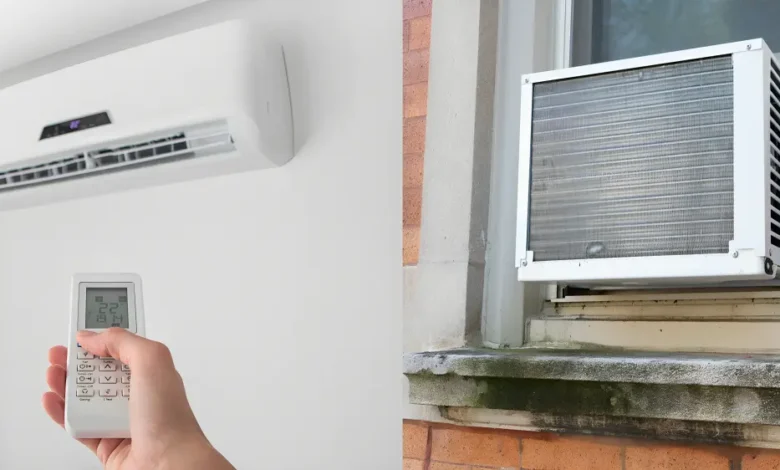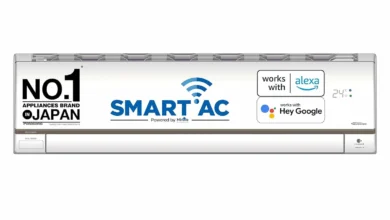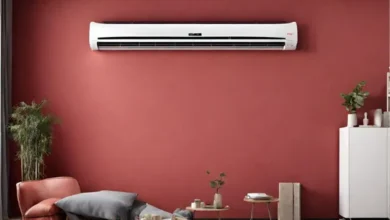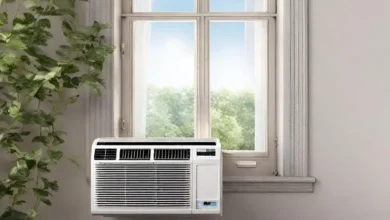Choosing Between Split AC and Window AC – Everything You Need to Know

Choosing Between Split AC and Window AC can be difficult. Air conditioners (ACs) have become an integral part of modern living, providing respite from the sweltering heat during hot summer months.
Also Read
As technology advances, various types of AC units have emerged to cater to diverse consumer needs. Among the popular choices are window ACs and split ACs, each with its own set of advantages and disadvantages.
This article aims to delve into the intricacies of both types, analyzing their performance, energy efficiency, installation, aesthetics, and other factors to help consumers make informed decisions.
Here’s a simplified comparison table for Window ACs and Split ACs in a Quick 1-Minute Read
| Feature | Window ACs | Split ACs |
|---|---|---|
| How They Work | Compact unit with all parts in one box | Two units – indoor (evaporator) and outdoor (compressor, condenser) |
| Installation | Placed in a window or wall hole | More complex, requires mounting both units |
| Cooling Capacity | Best for smaller spaces | Suitable for larger spaces |
| Cooling Efficiency | Effective for small spaces, moderate cooling | Higher cooling capacity, better for larger areas |
| Energy Efficiency | Lower EER, less energy-efficient | Higher EER, more energy-efficient |
| Installation and Looks | Easy installation, may obstruct view | Complex installation, more options for indoor unit placement |
| Flexibility and Zoning | Single room cooling, limited flexibility | Multi-room cooling, more flexibility and zoning |
| Noise Levels | Noisier, compact design leads to more noise | Quieter, outdoor unit reduces indoor noise |
| Maintenance and Repairs | Simple maintenance, components easily accessible | Complex maintenance, outdoor unit requires attention |
| Cost Considerations | Affordable, lower initial costs | Expensive, higher initial investment, potential long-term savings |
| Conclusion | Ideal for small spaces, budget-friendly and easy to install | Suitable for larger spaces, more cooling power and flexibility |
Remember that the choice between Window ACs and Split ACs ultimately depends on your specific needs, preferences, and budget.
Exploring the Differences: Window ACs vs. Split ACs
Understanding the Basics: Window ACs and Split ACs
Before delving into a detailed comparison, it is crucial to understand the basic structures of window ACs and split ACs.
Window ACs:
Window air conditioners are compact units that are typically installed in a window or a specially designed opening in a wall. They are self-contained systems with all the components—compressor, condenser, expansion valve, and evaporator—enclosed in a single box. The unit is mounted on a window or a hole in the wall, and it expels warm air outside while cooling the indoor space.
Split ACs:
Split air conditioners, on the other hand, consist of two main components: an indoor unit and an outdoor unit. The indoor unit is installed inside the room and contains the evaporator coil responsible for cooling the air. The outdoor unit houses the compressor and condenser, expelling the heat generated during the cooling process. The two units are connected by refrigerant pipes and electrical cables.
Performance and Cooling Efficiency:
Window ACs:
Window ACs are known for their efficiency in cooling smaller spaces. The compact design ensures that all components work together seamlessly, providing effective cooling. However, the cooling capacity is generally limited compared to split ACs, making them suitable for rooms with moderate cooling requirements.
Split ACs:
Split ACs are designed to offer higher cooling capacities, making them suitable for larger spaces. The ability to distribute the components allows for greater flexibility in cooling efficiency. The indoor unit can be strategically placed to optimize airflow, resulting in more even cooling throughout the room.
Verdict: While window ACs are efficient for smaller spaces, split ACs excel in larger areas, providing more robust cooling performance. This becomes an important aspect while choosing Between Split AC and Window AC.
Energy Efficiency:
Window ACs:
Window ACs generally have a lower Energy Efficiency Ratio (EER) compared to split ACs. EER is a measure of how efficiently an air conditioner uses electricity to cool a space. Window ACs may be less energy-efficient due to the limitations imposed by their compact design.
Split ACs:
Split ACs tend to have higher EER ratings, making them more energy-efficient. The ability to optimize the placement of the indoor unit contributes to improved airflow and cooling efficiency, resulting in better energy performance.
Verdict: In terms of energy efficiency, split ACs have the upper hand, providing a more sustainable and cost-effective cooling solution.
Installation and Aesthetics:
Window ACs:
Window ACs are relatively easier to install since they come as a single unit. The installation process involves placing the unit in a window or a specially designed opening, securing it, and connecting it to a power source. However, the appearance of the unit may not be as aesthetically pleasing, and it might obstruct the view from the window.
Split ACs:
The installation of split ACs is more complex as it involves mounting both the indoor and outdoor units. Refrigerant pipes and electrical cables need to be routed between the two units. While the indoor unit can be strategically placed to enhance aesthetics, the outdoor unit must be installed outside, which may impact the overall visual appeal of the property.
Verdict: Window ACs score higher in terms of installation simplicity, but split ACs offer more flexibility in optimizing indoor aesthetics.
Flexibility and Zoning:
Window ACs:
Window ACs are designed to cool a specific room or area. They lack the flexibility to cool multiple rooms unless multiple units are installed. Zoning capabilities are limited, and adjustments in temperature or airflow to specific zones are challenging.
Split ACs:
Split ACs offer greater flexibility and zoning capabilities. With multiple indoor units connected to a single outdoor unit, it becomes possible to cool different rooms or zones independently. This makes split ACs a preferred choice for larger homes or offices with diverse cooling needs.
Verdict: Split ACs provide superior flexibility and zoning options, catering to the varied requirements of modern living spaces.
Noise Levels:
Window ACs:
Window ACs are generally noisier than split ACs. The compact design necessitates that all components are enclosed in a single unit, leading to higher noise levels during operation.
Split ACs:
Split ACs, with the compressor and condenser located outside, tend to be quieter. The indoor unit, responsible for delivering cooled air, generates less noise, contributing to a quieter and more comfortable indoor environment.
Verdict: For those sensitive to noise, split ACs are a more suitable option, providing a quieter cooling experience.
Maintenance and Repairs:
Window ACs:
Maintenance and repairs for window ACs are relatively straightforward. The compact design means that all components are easily accessible for cleaning and servicing. However, if a major issue arises, accessing and repairing specific components may be challenging.
Split ACs:
Split ACs, with their dual-unit structure, may require more complex maintenance. The outdoor unit is exposed to external elements, requiring periodic cleaning of the condenser coils. While indoor units are generally easier to access, repairs involving the outdoor unit may be more intricate.
Verdict: Window ACs have a slight edge in terms of simplicity in maintenance, but both types require regular upkeep to ensure optimal performance.
Cost Considerations:
Window ACs:
Window ACs are generally more affordable in terms of initial purchase and installation costs. The simplicity of the unit’s design and installation process contributes to a lower overall cost.
Split ACs:
Split ACs tend to be more expensive due to the complexity of the system and the installation process. However, the long-term energy savings and efficiency may offset the higher initial investment.
Verdict: While window ACs are more budget-friendly upfront, split ACs offer potential long-term savings in terms of energy efficiency.
Conclusion: Making the Right Choice
The choice between window ACs and split ACs ultimately depends on various factors, including the size of the space, cooling requirements, aesthetic preferences, and budget constraints. Each type has its own set of advantages and disadvantages, and the decision should be based on a careful consideration of individual needs.
For smaller spaces with straightforward cooling requirements and a limited budget, window ACs may be the ideal choice. They are easy to install, cost-effective, and suitable for rooms with modest cooling needs.
On the other hand, split ACs are better suited for
larger spaces, offering higher cooling capacities, energy efficiency, and flexibility in zoning. While the initial investment may be higher, the long-term benefits in terms of energy savings and performance may justify the cost.
In conclusion, choosing Between Split AC and Window AC depends on the specific circumstances and priorities of the consumer. As technology continues to advance, it’s worth keeping an eye on emerging trends and innovations in the air conditioning industry, as new options may become available to meet evolving consumer needs.






